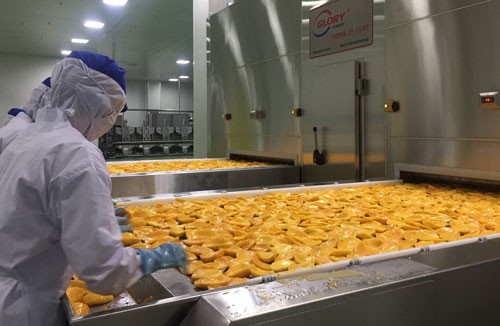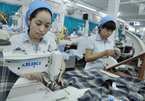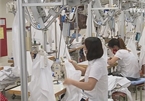Le Hoang Phuong from Bao Viet Securities noted that most of the tariff lines the EU has committed to remove have average tax rates of 10-20 percent, so the removal will bring great advantages to Vietnam’s vegetables and fruits.

This will also allow Vietnam to become more competitive with countries which do not have FTAs with the EU, such as Thailand and China.
As for imports from the EU, with a relatively long roadmap for tariff cuts, Vietnamese farmers will have enough time to adapt to new circumstances. The EU exports temperate climate fruits, which are not direct rivals to Vietnam.
|
As for imports from the EU, with a relatively long roadmap for tariff cuts, Vietnamese farmers will have enough time to adapt to new circumstances. The EU exports temperate climate fruits, which are not direct rivals to Vietnam. |
Experts say that Vietnam, however, will not find it easy to conquer the EU market. The current volume of fruits exported to the EU is not high. The Netherlands, France, Germany, Spain and Belgium were the biggest fruit importers of Vietnam’s fruits in 2018, but their imports were modest. The Netherlands, for example, just accounted for 1.65 percent of Vietnam’s total fruit exports.
Dang Phuc Nguyen, secretary general of the Vietnam Vegetable & Fruit Association, said that even though tariffs will be removed, Vietnam needs to improve product quality.
“The EU’s requirements on plant protection chemical residues are very strict. Vietnam’s production is small scale, which makes it difficult to apply technology to reduce the use of chemicals,” he explained.
Meanwhile, current fruit protection technology in Vietnam does not ensure high quality for the long term. This will be a big challenge for exports to distant markets like the EU.
In recent years, farmers in some provinces have been following GlobalGAP standards in fruit cultivation. However, the GlobalGAP growing areas remain small.
“Vietnam will only be able to take full advantage of the EVFTA after several years,” Nguyen said.
Regarding meat and dairy products, the EU has committed to remove the tariff on live animals, pork, beef and buffalo meat after the FTA takes effect, and remove the tariff on poultry products within five to seven years.
According to Phuong, Vietnam mostly exports live buffalo, cow, pig and fowl, while the EU mostly imports processed meat products. The EVFTA will bring benefits to Vietnam if it shifts to export products for which the EU has demand.
Xuan Lan

Textile and garment industry sees great opportunities in EVFTA
A number of industries that make products for export, including textiles and garments, are expected to change for the better if they can take full advantage of the value chain from EVFTA.

Garment and footwear to be greatly beneficial from EVFTA
With tax barriers for less sensitive commodities being completely lifted within no later than three years since the adoption of the or EVFTA, Vietnam’s garment and footwear industries are predicted to be beneficial from the trade deal.
 With the EU’s strong commitment on opening its market after the EU-Vietnam FTA (EVFTA) takes effect, 94 percent of 547 tax categories of vegetable and fruits will be removed.
With the EU’s strong commitment on opening its market after the EU-Vietnam FTA (EVFTA) takes effect, 94 percent of 547 tax categories of vegetable and fruits will be removed.